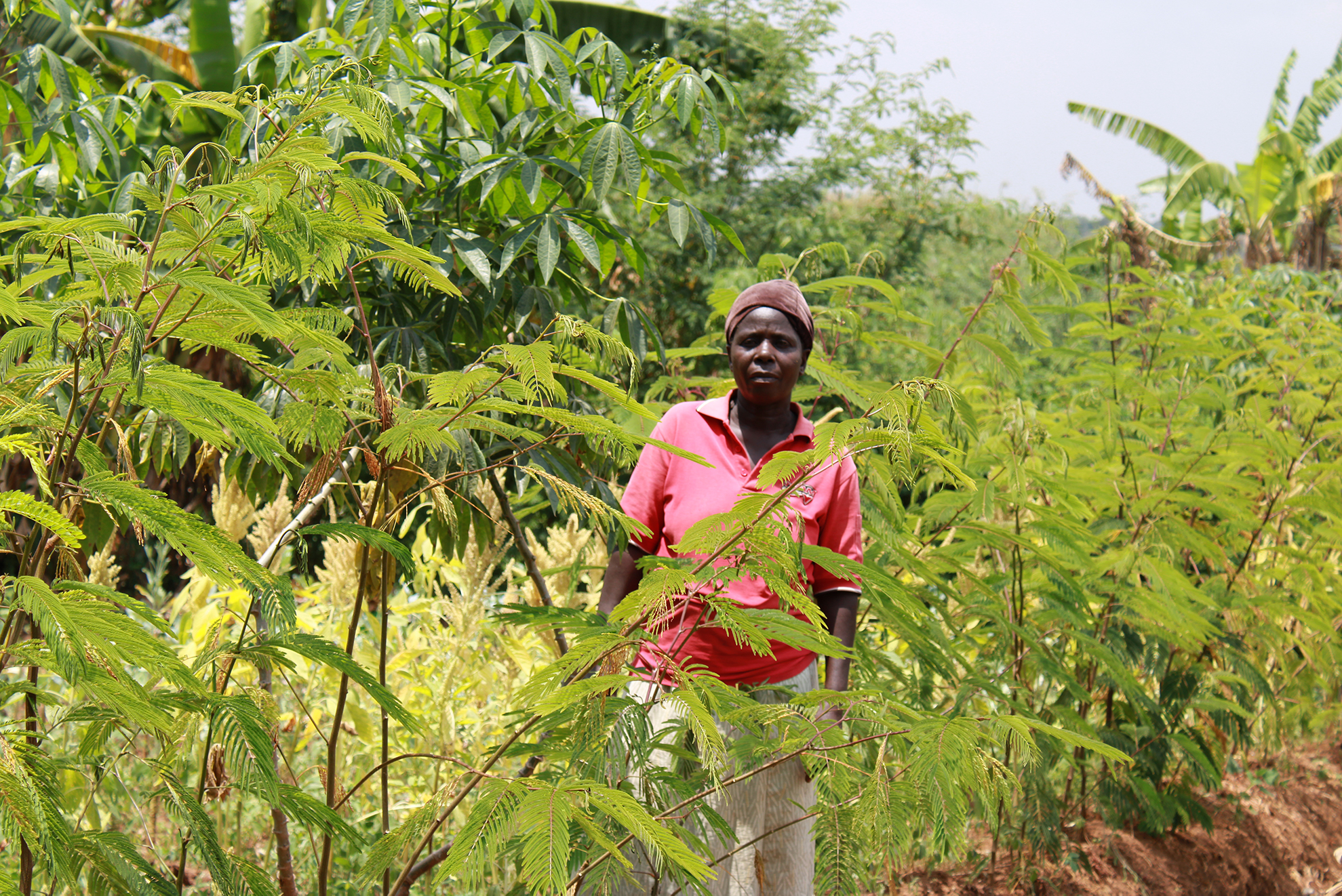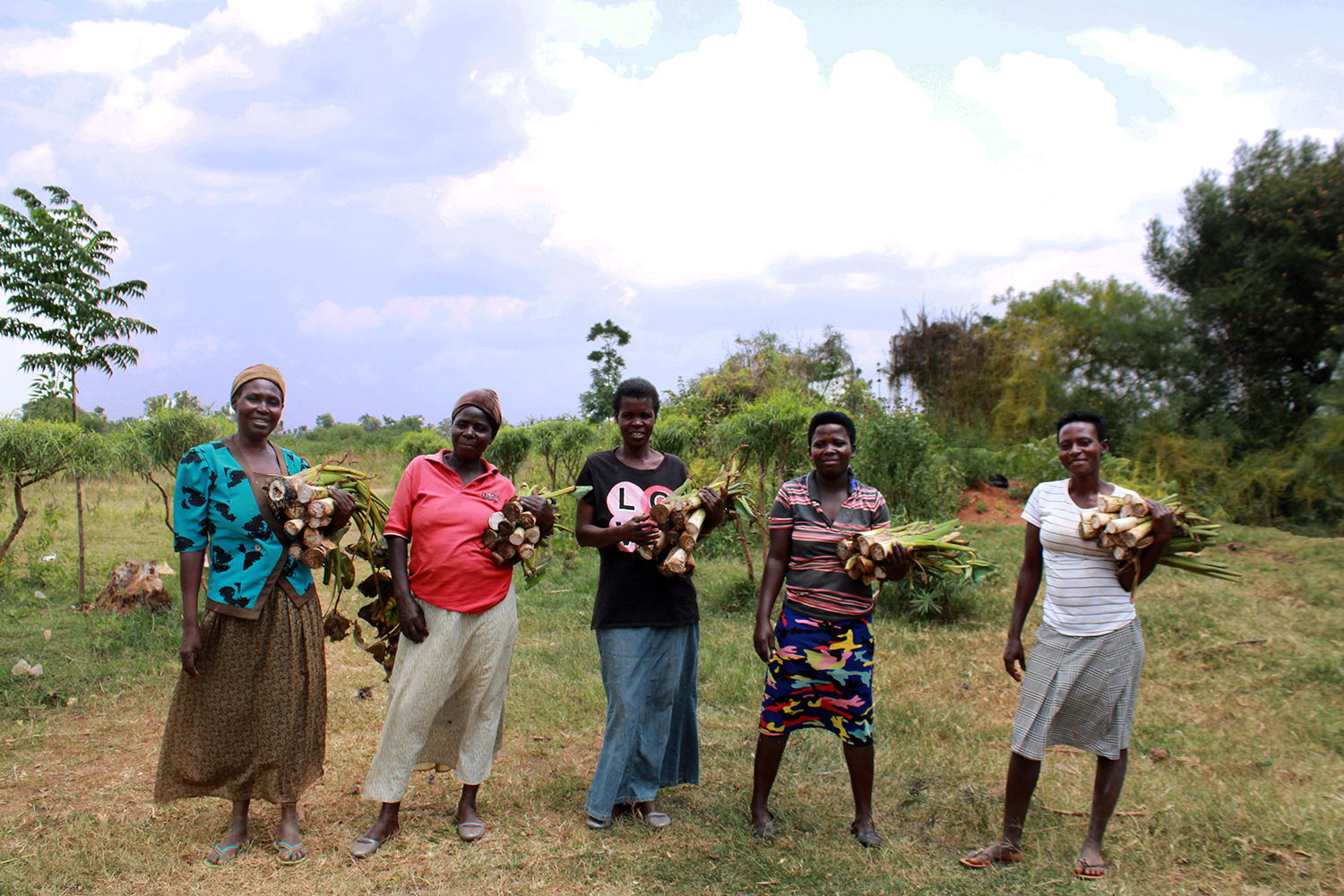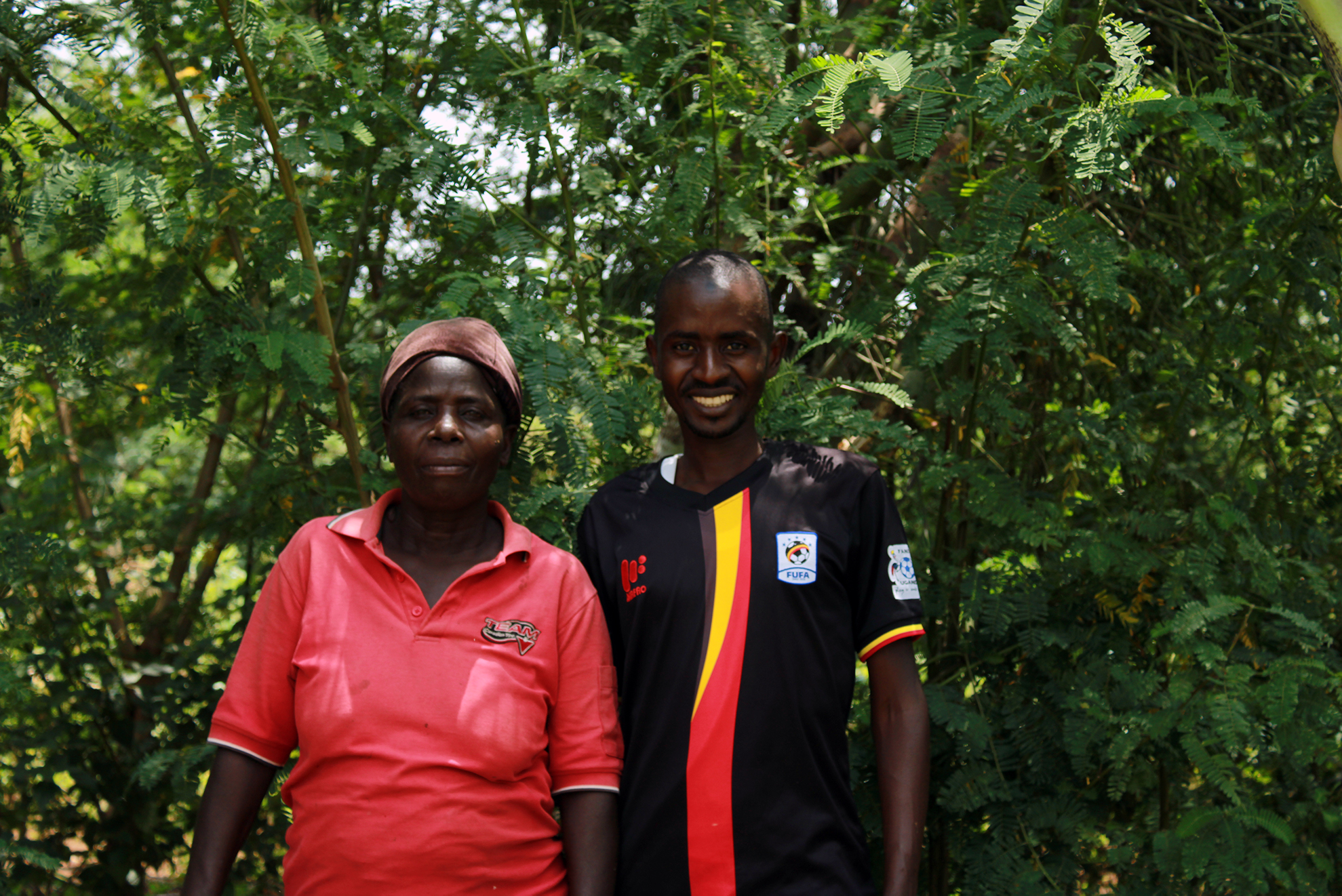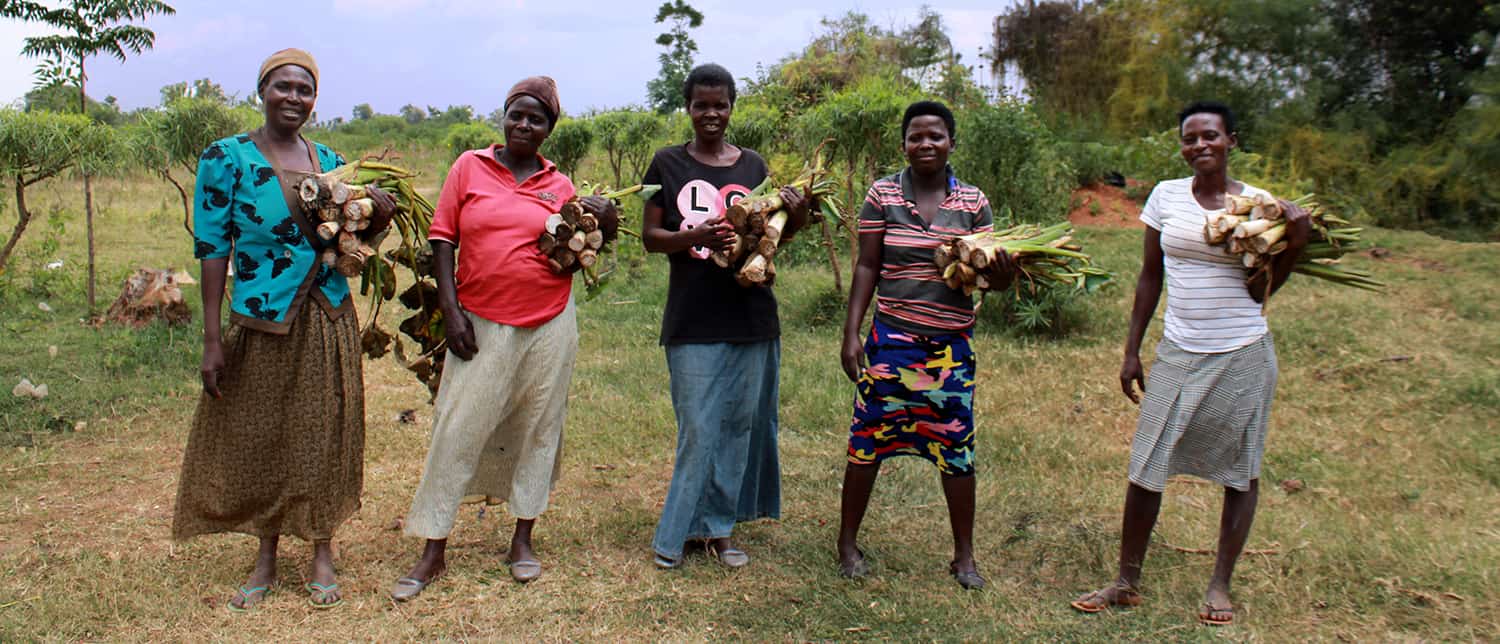
New Forest Garden Farmers
Loyce and 16 of her neighbors signed up with Trees for the Future (TREES) to learn how to establish agroforestry systems on their land in January of 2020. The agroforestry technique known as Forest Gardening helps repair degraded land and protect from unexpected challenges like flooding. At the same time, it improves access to nutrition and a regular income.

TREES works with thousands of farmers in the Lake Victoria basin. Lead Farmer Loyce and her fellow farmers are the closest to the lakeshore.
“This farmer group was the most affected in the project during the floods last year. They registered a lot of losses in terms of food and income,” said Francis Muliro, TREES Lead Technician, Busia.
Their traditional crops and fledgling Forest Gardens (consisting mostly of vegetable crops at that point) were covered by water for more than a month. The crops rotted under the flood waters and the farmers were unable to plant the agroforestry and fruit trees that would typically be planted during that time of year. The floods coupled with the COVID19 lockdown made the start of the group’s project even more difficult.
Resilience in Action
“However, to our surprise, Loyce and her fellow farmers have emerged as one of the top performing farmer groups in this sub county. When their gardens finally cleared, they worked hard to restore what was lost and pick up where they left off in March,” Muliro said.

Loyce is the Lead Farmer of the largely female group. As the water receded, they returned to their land to rebuild their gardens. She and her fellow farmers say they came out of the floods as a stronger group.
“We managed to help each other last year by working together in our gardens. We used to go to one person’s garden and help them when the water cleared, practicing what our teachers had told us during training so we could work [quickly]. This was easy because our gardens are all close to one another,” Loyce shares.
A Year Later
A year later, the land on which these gardens sit looks entirely different. There is an established green wall and harvests are coming in every month for these farmers.
“Me and my fellow group members are more than grateful to Trees for the Future for staying with us when we had the water problems last year. The technicians checked on us, trained us during and after the floods. That is how we have been able to rebuild one another,” Loyce says.
The group has also started a savings club. Each farmer contributes 1000 USh ($0.28 USD) from their Forest Garden sales each week. One member is given 17,000 USh ($5.00 USD) every Friday. They can use the extra money to buy more seeds to complement what they are given by TREES. Some members also buy chicks to have some livestock in the garden.
Help more farmers like Loyce become more resilient to floods, global health crises, and other unexpected challenges. When you donate to Trees for the Future, you are making a lasting impact.
